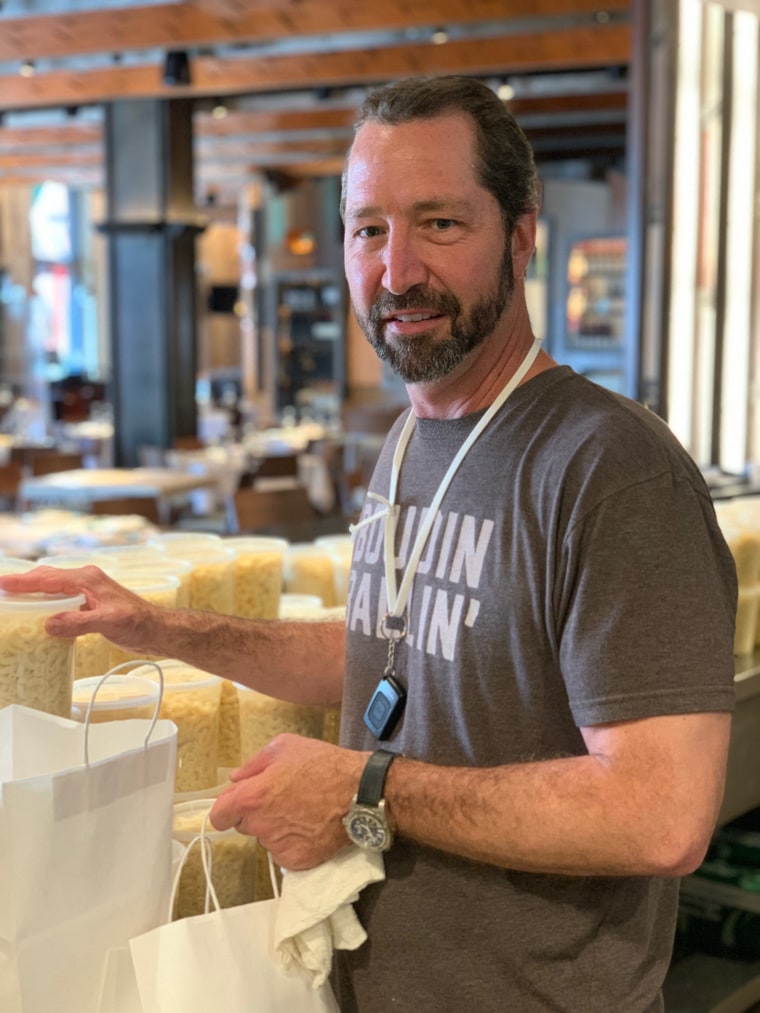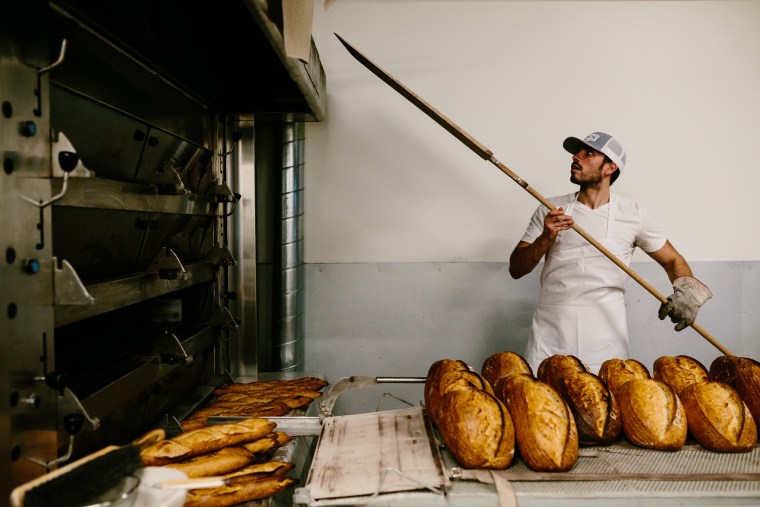Chefs live to feed people, but as an increasing number of restaurants have been forced to close or drastically shift how they operate amid the ongoing coronavirus pandemic, many in the culinary world are facing a grim reality while grappling with an uncertain future.
Since mid-March, restaurant owners have been making difficult decisions, like whether to let staff members go, or deciding if it's worth pivoting their entire businesses to takeout or delivery service models. Throughout this seismic industry change, many chefs are soldiering on — if they are able —despite increasing concerns about their own paychecks.
In these challenging times, chefs are still continuing to feed the public, their staff members and plenty of people battling the virus on the front lines.
Here's what four chefs want people to know about what they’re going through, how to stay safe and well fed and what the public can do to support their favorite places.
1. We want to keep serving you

Plenty of restaurants, like the Italian eatery Gnocco in New York City, have remained open for delivery and takeout, even if it might not necessarily be profitable at the moment.
“I’d save money staying home and closing my restaurant,” said Gnocco’s executive chef and owner, Gian Luca Giovanetti. “But it’s very important to support those who have supported us for so long. We need to help each other.”
Giovanetti is happy that he's been able to offer takeout or delivery, but also hopes that people will continue to take the appropriate safety precautions, like thoroughly washing their hands before eating and using contactless delivery.
Download the TODAY app for the latest coverage on the coronavirus outbreak.
2. Pay attention to how you heat up food
Cooking food to 165 degrees, or higher, will kill most bacteria and, according to the World Health Organization, the virus is likely susceptible to normal cooking temperatures. So whether you're cooking at home or reheating food, chefs want their customers to be mindful of the best food prepping practices.
“We’re serving one-pot meals, mainly stews and soups, to be boiled, which is a lot safer,” said Chris Wilson, culinary director of Emeril Lagasse’s restaurants, all of which are closed to the public due to coronavirus.
At Emeril’s in New Orleans, Wilson has been cooking up meals for hundreds of staff members, their families, first responders and health care workers in the city.
3. Try shopping for food differently
While many supermarkets are doing what they can to promote social distancing by limiting customers and introducing senior hours, they still attract a lot of people. Now restaurants and other eateries are rolling out new ways to get good, cheap food.
Reunion Bread in Denver is one of many food businesses that has recently partnered with an outside vendor to offer discounted packages of fresh bread and produce to customers.
“We’re selling out of a truck in our restaurant parking lot so people don’t have to get out of their cars," Ismael de Sousa, Reunion Bread's executive chef and owner, told TODAY. "They can buy the basics with us and there’s a natural separation between cars. It’s also a way to avoid the lines and exposure at the grocery store.”
Restaurant chefs routinely buy from wholesalers and local specialists, such as butchers, bakers, produce vendors and fishermen. Now that these wholesalers can no longer sell as much to restaurants, many are offering goods to the public for the first time ever. This is especially true in cities like New York, Dallas and Charleston, South Carolina, that have big food scenes. Retailers are using social media to post where and when the public can buy products at discounted prices.
De Sousa recommends continuing to support local businesses by buying fresh products while they're readily available.
4. This is an especially rough time of year
Spring is usually one of the busiest times of year for restaurants, so many restaurateurs who were looking to make up for any potential losses have been devastated.
"The time of year is detrimental, spring is the busy time for tourism and restaurants,” said Ryan Hacker, executive chef at Brennan’s, a 200-year-old New Orleans' institution that closed its doors early on in the pandemic.
“We (make) most of our money January through June — then it's dead in the summer, then make it all back in the winter/spring," Hacker said. "You make the money now to hold you over.”
Without any money from the usually busy spring season, many restaurants (even those previously operating in the black) are facing the reality that they may never open again after the health crisis abates.

5. We’re doing everything we can to keep going — but it’s tough
Aside from ramping up their takeout and delivery operations, many restaurants are adapting to the times by adopting new revenue streams. Some are offering bottles of wine at discounted prices or pre-made drink mixes. In New Orleans, where there is an open container policy, certain restaurants offer cocktails to-go.
Other eateries are creating innovative food packages. For example, Shack Shack is offering DIY burger kits and many local eateries have started selling larger quantities of versatile items like soups and sauces.
“We’re doing gift cards and donating 25% to our employees,” Hacker said. “A lot of restaurants are doing this. Whenever you use a gift card, after this is all over, it will help us make up the difference.” Other restaurants, like Gnocco and Emeril’s, launched GoFundMe relief accounts where people can send money directly to help restaurants and their staff members.
Still, most restaurants in the country operated on slim margins before the pandemic, and shifting to a takeout or delivery model (and relying on future sales) is most likely not sustainable. Many restaurant owners say the scant revenue coming in now still just isn’t enough to keep their businesses afloat.
Wilson said every day is a struggle. He constantly asks himself if he should be staying at home with his family or continue to make meals for those who need it. For now, he wants to keep coming in until he is no longer permitted.
“My personal feelings are of uncertainty right now, but I have confidence in going forward, and that we’re doing everything we can for our staff," said Wilson. "We’re trying to take a company that’s closed and sustain it. I’d love to see all of our employees come back to our restaurants.”

